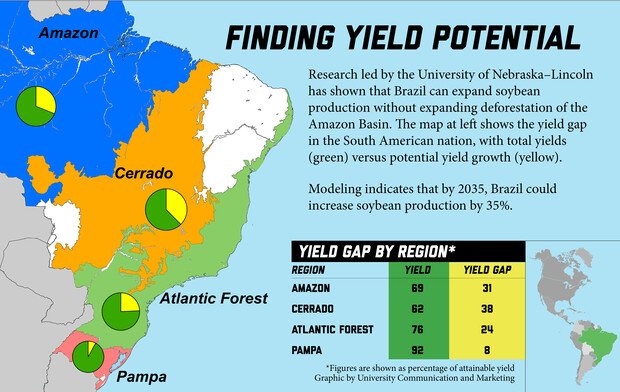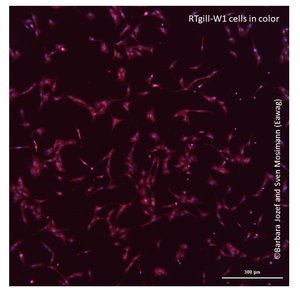A four-year study by the University of Nebraska-Lincoln and its research partners in Brazil identified a path forward that would allow Brazil to strengthen its agricultural sector while safeguarding the rainforest. The scientists’ recommendations have broad applicability to other developing countries facing a similar challenge.
The study led by Patricio Grassini, Sunkist Distinguished Professor in Agronomy and associate professor in the Department of Agronomy and Horticulture at Nebraska, shows how it could be possible for Brazil to expand its agricultural production without converting more rainforest and savannah to crops. With a carefully managed strategy to intensify production on existing acres, the country could increase its annual soybean output by 36% by 2035 while reducing greenhouse gas emissions by 58% compared to current trends.
Grassini and his co-authors describe a three-pronged “intensification” strategy that calls for significantly increasing soybean crop yields; growing a second crop of corn on soybean fields in certain areas; and raising more cattle on smaller pastures to free up more land for soybeans.
Brazil’s tropical and subtropical climates make it possible to cultivate two crops on the same land during the growing season in most regions, Grassini said. Plus, “livestock production is huge in Brazil,” he said, “and our study shows there is a big opportunity for Brazil to increase livestock-based production systems and by doing so, free up some of the area currently used for livestock production and use that land for producing more soy.”
Detailed modeling for the project indicates that by 2035, the strategy could boost Brazil’s soybean production by 36%. At the same time, Grassini said, Brazil could “eliminate deforestation completely and essentially reduce the amount of carbon dioxide equivalents released into the atmosphere, helping to mitigate climate change.”
“This approach strengthens agriculture while protecting fragile ecosystems that are important from a perspective of climate change mitigation as well as biodiversity conservation,” he said.

To determine how much yields could be improved on existing Brazilian farm ground, the scientists examined soybean production in four key regions: the Pampa and the Atlantic Forest regions along the Atlantic coast, where soybean cultivation has been underway for about 50 years, and the Amazon and the Cerrado regions in Brazil’s interior, where soybean production began after the turn of the 21st century.
Grassini’s team calculated three scenarios in the four key regions: “business as usual,” where existing trends would continue; “no cropland expansion,” where additional land conversion would be prohibited; and “intensification,” where steps would be taken to increase yields, encourage second cropping and concentrate cattle production. They concluded the intensification strategy would enable Brazil to realize 85% of the projected gross income from soybean and second-crop maize, compared to current trends, while reducing global climate warming by 58%.
The four-year project involved collaboration between the University of Nebraska–Lincoln and universities in Brazil, including the University of Sao Paulo, Federal University of Santa Maria and University of Goias, as well as Embrapa, the leading agricultural research organization in Brazil. The project was funded by the International Plant Nutrition Institute, Research Foundation of the State of São Paulo, Brazilian Research Council, Research Foundation of the State of Rio Grande do Sul, and the Global Engagement Office in Nebraska’s Institute of Agriculture and Natural Resources through the FAPESP-UNL SPRINT program.
Check out the study here.


![Grassini_005[29]_0](/media/images/Grassini_00529_0.2e16d0ba.fill-800x500.jpg)










